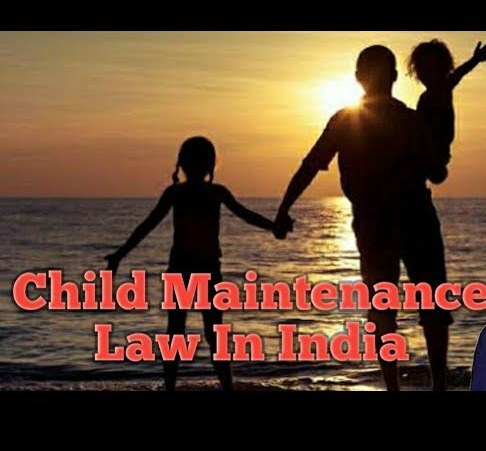Ashim Kumar Banerjee, J.@mdashA short question involved in this appeal is whether the learned Judge of the Court below was right in refusing the prayer for condonation of delay in filing the application for setting aside of the award beyond the statutory period of 90 days.
2. Before going into the factual matrix in detail few dates are relevant which are quoted as follows:
LIST OF DATES
---------------
December 27, 2004 - Award passed by Ld.
Arbitrator.
January 25, 2005 - Award received by
Appellant.
April 29, 2005 - Application u/s 34 of
Arbitration & Conciliation
Act, 1996 filed.
94 Days
--------
August 14, 2006 - Order passed by Soumitra
Sen, J.
August 24, 2006 - Order received by
Appellant.
September 11, 2006 - Misc. Case filed by
Appellant.
18 Days
--------
3. From the above list of dates we find that the application for setting aside was filed on the 112th days since the receipt of the copy of the award from the Arbitrator meaning thereby, there had been delay of 22 days. If we consider Section 34(3) of the Arbitration and Conciliation Act, 1996 we would find that the Court can, on sufficient cause, condone the delay up to the period of 30 days meaning thereby if an application is made beyond (90 + 30) : 120 days the Court has no power. In the instant case the Court calculated the period and came to the ultimate conclusion that the application was filed on 122nd day. Hence it was beyond 30 days after expiry of the statutory period and as such the Court had no power. If the calculation made by the Court was correct the decision could not be interfered. We, however, wish to approach the problem in a different way.
4. On analysis of the backdrop, we find that the appellant approached this Court by filing an application for setting aside. This Court observed that it lacked pecuniary jurisdiction as the claim fell below Rs. 10 lakhs. The learned Judge permitted the petition to be withdrawn for the purpose of filing it to a proper Court. The order dated August 14, 2006 appearing at pages 78-79 of the paper book made it clear that the period during which the application had been kept pending before His Lordship, would be excluded for the purpose of calculating the period of limitation.
5. The said order was passed on August 14, 2006 whereas we find that the order was signed by the Court Officer on August 24, 2006 as appears from page 79 of the paper book. Section 14 of the Limitation Act permits a Court to give exclusion of time for a bona fide proceeding erroneously instituted before a wrong Court. Here the learned Judge observed as such being prompted by Section 14 of the Limitation Act. The explanation to Section 14, inter alia, provides that in excluding the time the period starting from the institution of the former proceeding till the end of the said proceeding, would be calculated. The learned Judge, giving a strict interpretation to this explanation, observed that since the order was passed on August 14, 2006 the appellant was entitled to the benefit of Section 14 up to that date and not further.
6. Once a proceeding is instituted before a Court of Law it would only terminate by a Court''s order and passing of a Court''s order is complete when the Judge signs the same. It is true that the order was passed on August 14, 2006. We do not find when the learned Judge signed the order. We, however, find that His Lordship''s Officer signed it on August 24, 2006. Hence, giving the benefit of doubt we hold that the proceeding ended on August 24, 2006 and not on August 14, 2006.
7. The matter may be viewed from another angle. On a hypothesis, could the appellant file the application for setting aside on August 14, 2006 before the other Court ? The answer would be "no" as the other Court would require the proper order for termination of the former proceeding which was also initiated for the identical purpose and such termination could only happen when the learned Judge would pass and sign the order to the said effect. Hence, giving a liberal construction of Section 14, we are of the view that the learned Judge should have taken into consideration the period when the order was not signed by the Court Officer.
8. Mrs. Sumita Mukherjee, learned Counsel, appearing for the respondent, however, strenuously argues that the Court rightly interpreted Section 14 of the Limitation Act as well as Section 34 of the said Act of 1996. The Court, by virtue of the clear mandate of Section 34(3), could not have condoned the delay of 32 days which was admittedly beyond the statutory period of relaxation provided under the said provision. In support of her contention Mrs. Mukherjee has cited an authority in the case of Consolidated Engineering Enterprises v. Principal Secretary (Irrigation Dept.) and Ors. reported in 2008 (2) ALR 139 in support of her contention that the period of limitation could not be excluded u/s 14. If we peruse paragraph 33 of the said decision we would find that Their Lordships held that when there is cause to apply Section 14, the limitation period continues to be three months and not more, but in computing the period of limitation for three months for the application u/s 34(1), the time during which the applicant was prosecuting such application before the wrong Court is excluded, provided the proceeding in the wrong Court was prosecuted bona fide. This observation supports our view.
9. The appeal succeeds. The judgment and order under appeal is set aside.
10. The matter is remanded back to the Court below to be heard on merit after condoning the delay.
11. Pursuant to the direction of this Court", a sum of Rs. 5 lakhs has already been deposited by the appellant. Let the same be kept in a suitable interest bearing fixed deposit subject to the result of the setting side of proceeding pending before the Court below.
12. We humbly request the Court below to expedite the process of disposal of the setting aside proceeding as it was pending for a substantial period.
13. We abundantly make it clear that we have not entered into the merit of the matter. Learned Judge would be free to decide the matter on merit in accordance with law without being influenced the observations, if any, made herein.
14. The appeal is thus disposed of wit-out any order as to costs.
15. Urgent Xerox certified copy of this order, if applied for, be given to the parties.
Kishore Kumar Prasad, J.
16. I agree.

